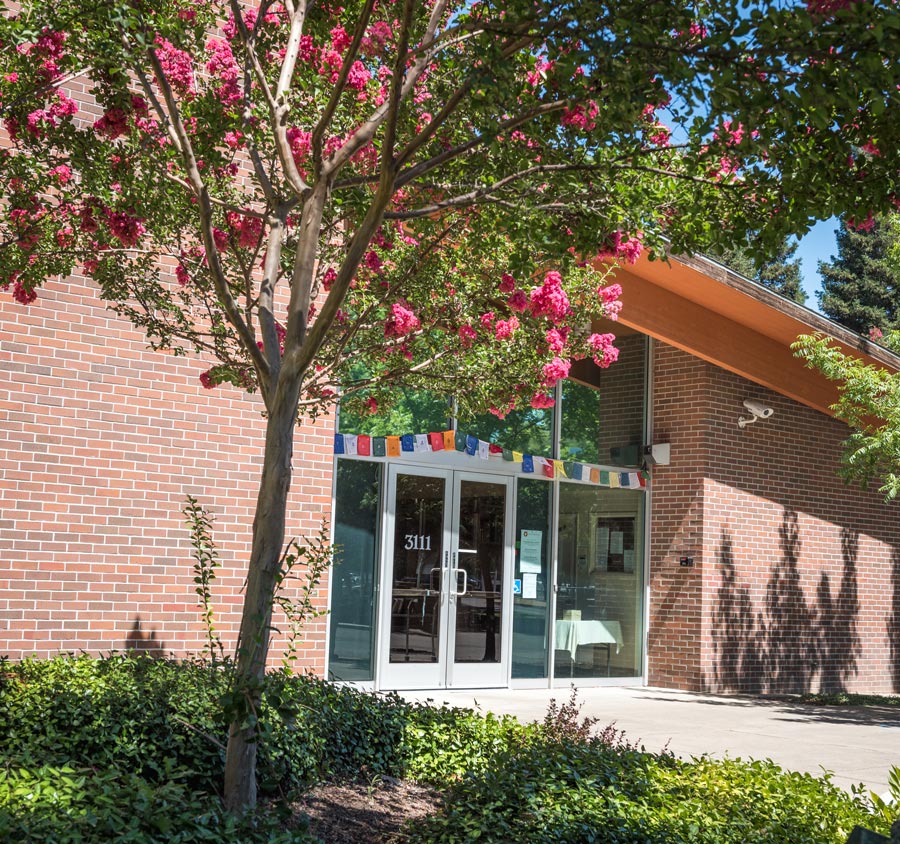
Welcome to the launch of conversations exploring how Sacramento Dharma Center is taking shape, under the title “Thus Have I Heard.” Your responses are invited, as well as your own thoughtful writing.
Our first writer suggests that SDC empowers our sense of being a collective Sangha, a community whose members support each others’ deepening practice, as well as enhancing the resources of individual Sanghas, similar to the model of AA.
~
First person I heard say it was Ram Dass: “I’ll pretend you’re who you think you are if you’ll pretend I’m who I think I am.”
The issue of identity is central to every pilgrim’s spiritual undertaking. Who am I? More to the point, Who am I when I begin to suspect I’m not who I think I am? Or who they told me I was? Or am supposed to be? Because at some point just about every pilgrim comes to the realization he/she isn’t the being described/prescribed by the instructions and programming he/she perceived while growing up.
Just about every spiritual smorgasbord has identity as some sort of main dish, but they don’t all provide a hard and fast answer to the identity conundrum. Buddhism, for example, says . . . well what does Buddhism say, anyway? Me, I’m way too new at the Buddhist quest to even begin to offer an explanation of what Buddhism says I am. Or you are.
What I like about Buddhism is the way it provides all these wonderful umbrellas to feel safe and comfortable under while I’m conducting the search for identity. The four truths. The eightfold path. The mettas. The three refuges.
As a seeker come to Buddhism from the world of the twelve steps, I’m especially fond of the three refuges. “I take refuge in the Buddha. I take refuge in the Dharma. I take refuge in the Sangha.” Probably I like them because of the way they so readily translate into the language of addiction: “I take refuge in the higher power. I take refuge in the literature of alcoholism. I take refuge in the community.”
Of those three, I feel it’s the third that provides me with some of the very most nourishing food for thought/meditation. Sangha. Community. A collective of fellow seekers, fellow explorers, fellow travelers.
Of course it’s always possible to define the group one is part of, or wants to feel part of, by using a very narrow set of parameters or boundaries. One of the things that has attracted me to Buddhism is a sense that the lines between the different schools aren’t nearly so exclusionary as the lines, say, between the Sunni or Shi’ite or Wahhabi schools of Islam. I think that’s part of what Everyday Zen Center priest Norman Fischer was referring to in a recent retreat here in Sacramento when he made reference to the “genius” of AA. There are more than 500 weekly AA meetings in the Sacramento area, but nobody in those meetings talks about their own particular meeting as being “better” than anybody else’s meeting.
Once a year people from the different AA meetings get together for a Spring Fling, and it can only be described as a joyous three-day love fest.
The Sacramento Dharma Center has been created to provide both a literal and a metaphorical umbrella for the Buddhist communities in the Sacramento area. One of the ongoing challenges for these communities has been finding physical facilities for their meetings and activities. Addressing this problem collectively is a primary purpose of SDC.
In the beginning this will probably mean that the component Buddhist communities may need to pool their fiscal and other resources to obtain and/or develop the building, or building and grounds, for the group to share. But in the long run the sense of Sangha that is bound to result from such a collective effort will almost certainly compensate for whatever short-term challenges the individual Buddhist communities might experience through their involvement. One need only look at the growth and development of Spirit Rock in Marin County to appreciate what can be done by working together for a set of shared goals.
There is already a shared sense of Sangha among the Sacramento Buddhist communities: a shared sense of working for a common set of purposes as set forth in the words of the Buddha. In the AA world an individual member refers to him/her self, identifies him/herself, as a friend of Bill, after Bill Wilson, the founding spirit of AA. When a friend of Bill strengthens his/her sense of involvement in the AA community (primarily through service), there is no sense of diminution in his/her own sense of independence or autonomy. Rather, there is a growing sense of strength by being part of the group. So it is with Buddhists, or Buddhist groups, that work for the strength and solidarity of the Sangha.
~Sam, member of SDC Sustaining Circle~
BACK TO NEWS & EVENTS